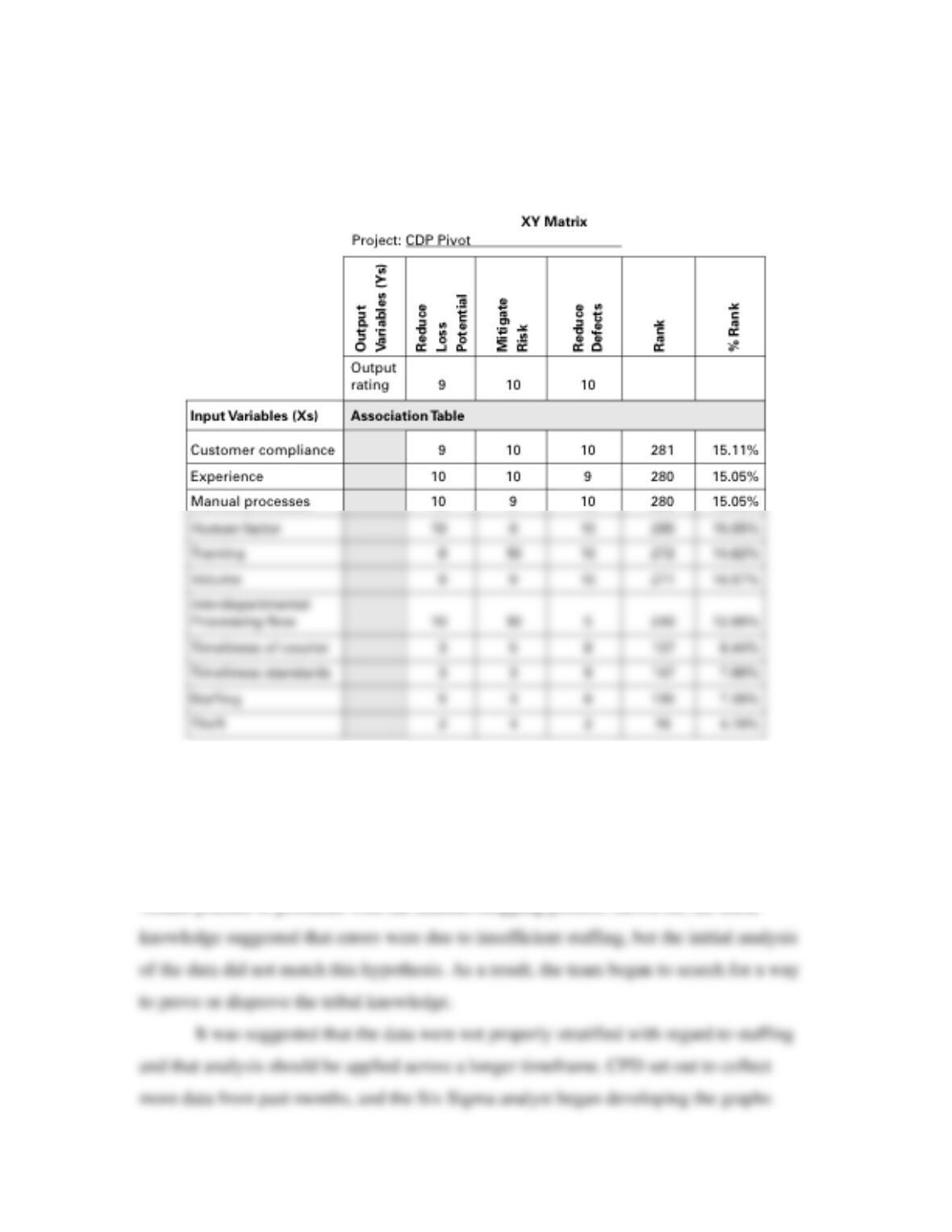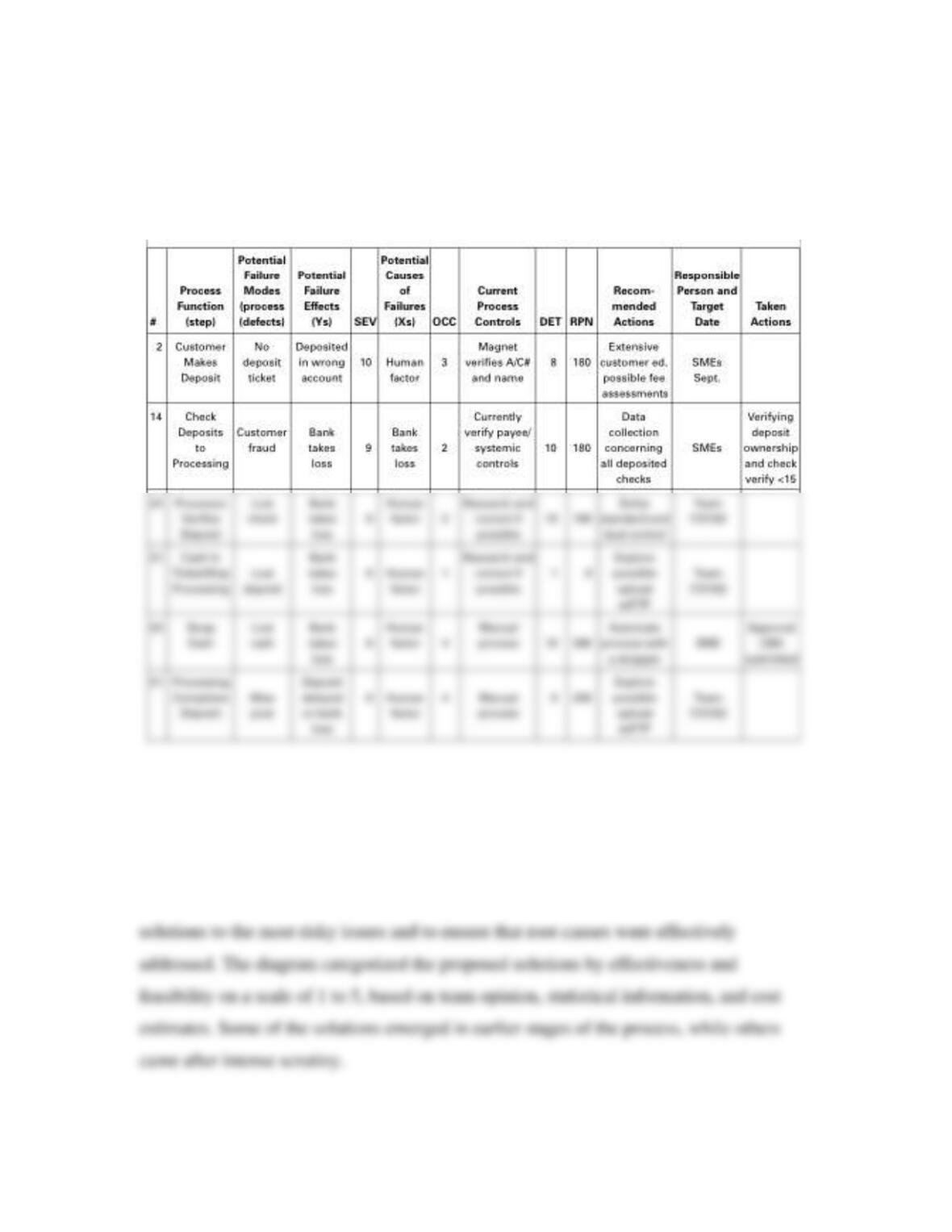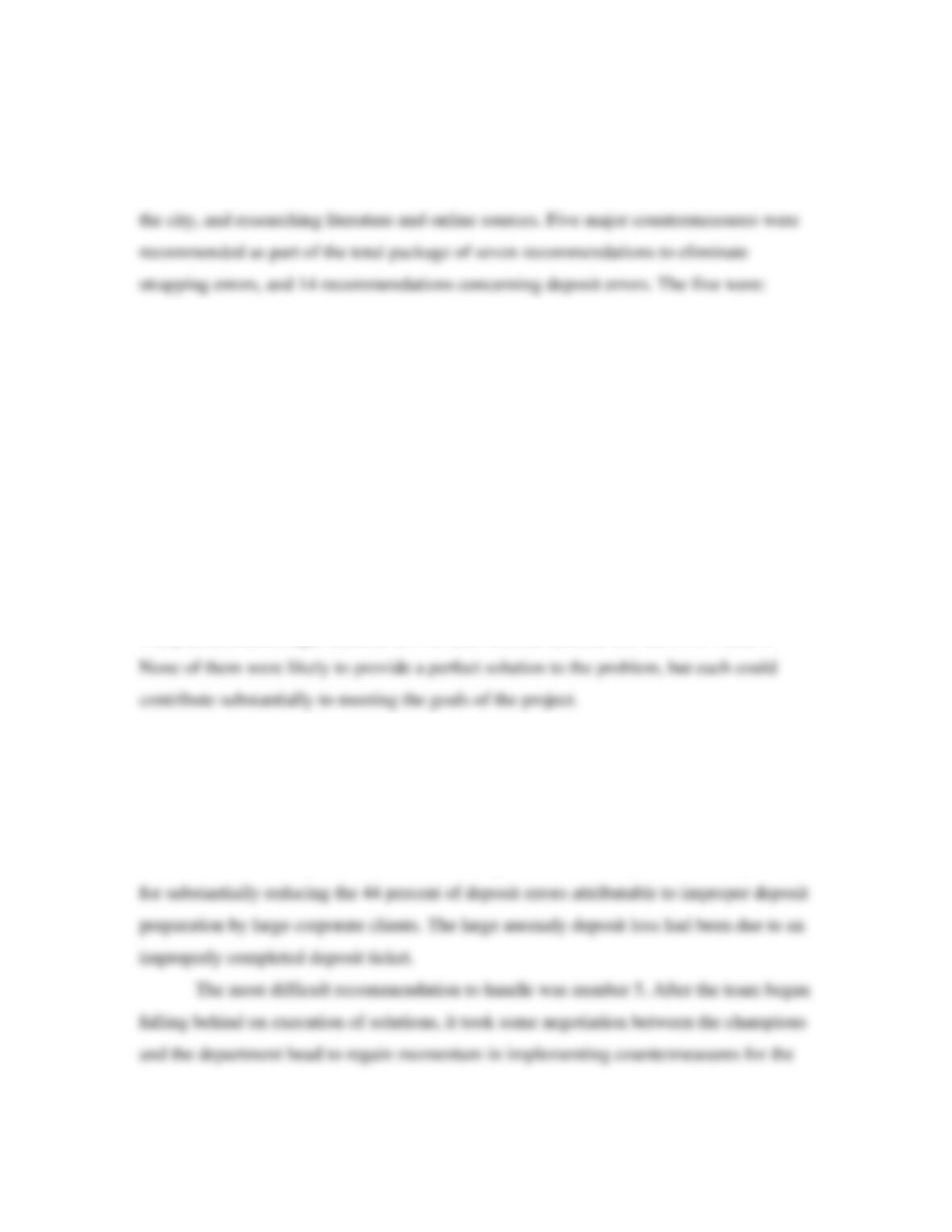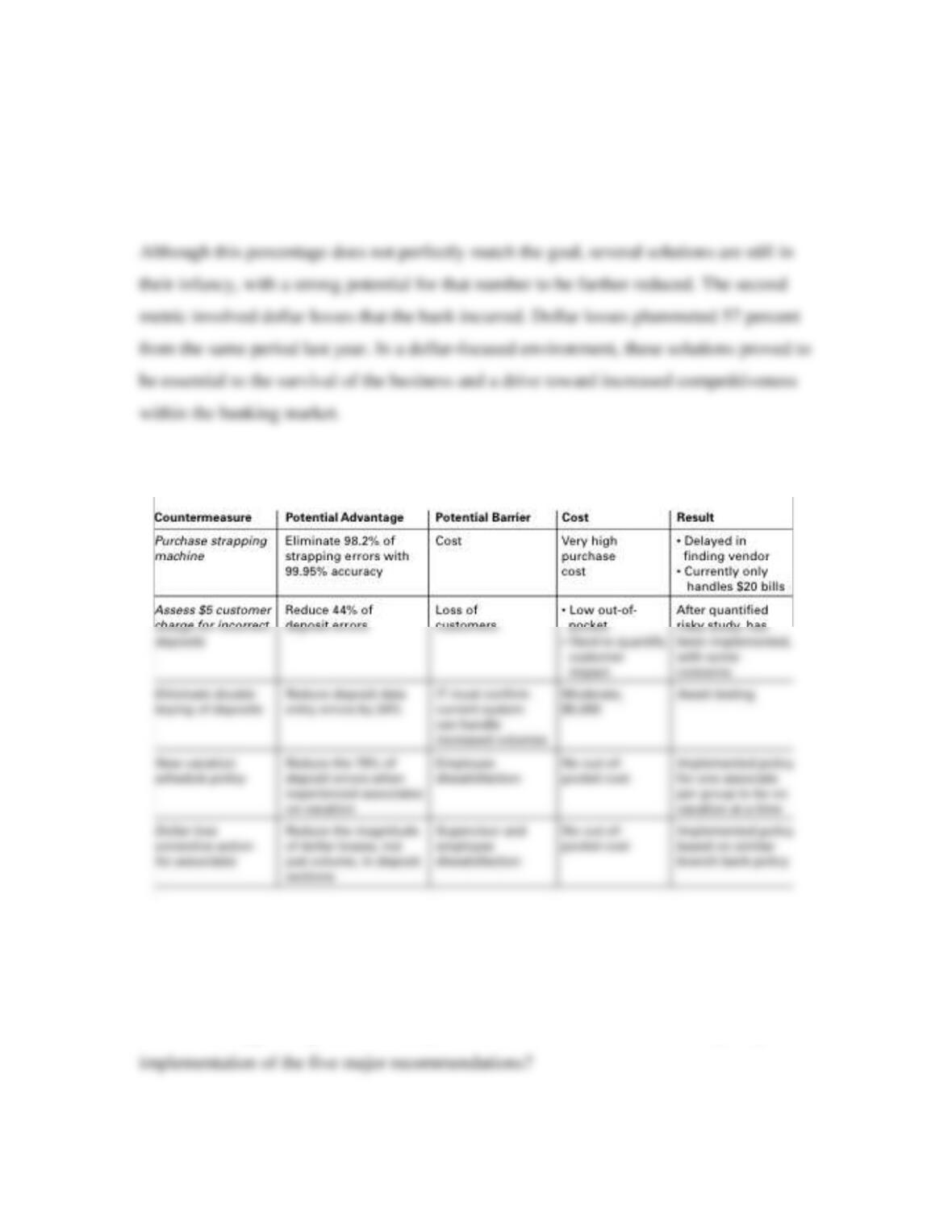needed to examine the new data. Over the next week, some 100 different graphs were
created, depicting data in single strands and also paired with variables that interacted with
one another. The team’s Six Sigma training had emphasized the importance of fully
exploring all data interactions, using graphs to illustrate relationships between variables.
Despite the team’s best efforts to find a relationship, staffing and volume did not appear
to affect strapping errors. This finding disproved the tribal knowledge, while providing a
multitude of additional graphs for analysis.
Strong correlations were seen in the graphs involving human factors and manual
processes. CPD’s processes called for numerous manual steps when handling cash. The
graphs’ trends suggested that whenever a manual process occurred, the number of errors
To further evaluate the process, the team decided to utilize Failure Mode and
Effects Analysis. The FMEA paralleled the process map constructed in the Measure
stage, but concentrated more on the inputs to the processes. Once the steps were laid out,
the team brainstormed potential fallouts or errors from the process. Each of these errors
was then charted until the potential effect of the individual problem was found. After the
causes and effects were mapped out, each process step was then ranked on three
categories: severity, occurrence, and detection, to create an overall ranking of potential













